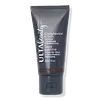What's inside
What's inside
 Key Ingredients
Key Ingredients

 Benefits
Benefits

 Concerns
Concerns

 Ingredients Side-by-side
Ingredients Side-by-side

Water
Skin ConditioningDimethicone
EmollientPhenyl Trimethicone
Skin ConditioningPropanediol
SolventPolyphenylsilsesquioxane
Cetyl PEG/PPG-10/1 Dimethicone
EmulsifyingTrimethylsiloxysilicate
EmollientIsododecane
EmollientEthylhexyl Palmitate
EmollientGlycerin
HumectantPolysilicone-11
Disteardimonium Hectorite
StabilisingMagnesium Sulfate
Quaternium-90 Bentonite
Phenoxyethanol
PreservativeDimethicone/Vinyl Dimethicone Crosspolymer
Skin ConditioningPolyhydroxystearic Acid
EmulsifyingTriethoxycaprylylsilane
Hydroxyacetophenone
AntioxidantTocopheryl Acetate
AntioxidantPropylene Carbonate
SolventEthylhexylglycerin
Skin ConditioningMica
Cosmetic ColorantCI 77891
Cosmetic ColorantIron Oxides
Water, Dimethicone, Phenyl Trimethicone, Propanediol, Polyphenylsilsesquioxane, Cetyl PEG/PPG-10/1 Dimethicone, Trimethylsiloxysilicate, Isododecane, Ethylhexyl Palmitate, Glycerin, Polysilicone-11, Disteardimonium Hectorite, Magnesium Sulfate, Quaternium-90 Bentonite, Phenoxyethanol, Dimethicone/Vinyl Dimethicone Crosspolymer, Polyhydroxystearic Acid, Triethoxycaprylylsilane, Hydroxyacetophenone, Tocopheryl Acetate, Propylene Carbonate, Ethylhexylglycerin, Mica, CI 77891, Iron Oxides
Water
Skin ConditioningDimethicone
EmollientIsododecane
EmollientCetyl PEG/PPG-10/1 Dimethicone
EmulsifyingPhenyl Trimethicone
Skin ConditioningPropanediol
SolventIsoamyl Laurate
EmollientPolyglyceryl-2 Dipolyhydroxystearate
Skin ConditioningPolyglyceryl-3 Diisostearate
EmulsifyingDisteardimonium Hectorite
StabilisingBoron Nitride
AbsorbentTrimethylsiloxysilicate
EmollientCaprylyl Glycol
Emollient1,2-Hexanediol
Skin ConditioningSodium Chloride
MaskingSodium Dehydroacetate
PreservativeTriethoxycaprylylsilane
Aluminum Hydroxide
EmollientDimethicone/Vinyl Dimethicone Crosspolymer
Skin ConditioningTocopheryl Acetate
AntioxidantSodium Phytate
Parfum
MaskingMaris Aqua
HumectantHydrolyzed Algin
Phenethyl Alcohol
MaskingSucrose
HumectantCI 77891
Cosmetic ColorantCI 77499
Cosmetic ColorantCI 77492
Cosmetic ColorantCI 77491
Cosmetic ColorantWater, Dimethicone, Isododecane, Cetyl PEG/PPG-10/1 Dimethicone, Phenyl Trimethicone, Propanediol, Isoamyl Laurate, Polyglyceryl-2 Dipolyhydroxystearate, Polyglyceryl-3 Diisostearate, Disteardimonium Hectorite, Boron Nitride, Trimethylsiloxysilicate, Caprylyl Glycol, 1,2-Hexanediol, Sodium Chloride, Sodium Dehydroacetate, Triethoxycaprylylsilane, Aluminum Hydroxide, Dimethicone/Vinyl Dimethicone Crosspolymer, Tocopheryl Acetate, Sodium Phytate, Parfum, Maris Aqua, Hydrolyzed Algin, Phenethyl Alcohol, Sucrose, CI 77891, CI 77499, CI 77492, CI 77491
Ingredients Explained
These ingredients are found in both products.
Ingredients higher up in an ingredient list are typically present in a larger amount.
This ingredient is a high molecular weight silicone. It has emulsifying and skin conditioning properties.
Ci 77891 is a white pigment from Titanium dioxide. It is naturally found in minerals such as rutile and ilmenite.
It's main function is to add a white color to cosmetics. It can also be mixed with other colors to create different shades.
Ci 77891 is commonly found in sunscreens due to its ability to block UV rays.
Learn more about CI 77891Dimethicone is a type of synthetic silicone created from natural materials such as quartz.
What it does:
Dimethicone comes in different viscosities:
Depending on the viscosity, dimethicone has different properties.
Ingredients lists don't always show which type is used, so we recommend reaching out to the brand if you have questions about the viscosity.
This ingredient is unlikely to cause irritation because it does not get absorbed into skin. However, people with silicone allergies should be careful about using this ingredient.
Note: Dimethicone may contribute to pilling. This is because it is not oil or water soluble, so pilling may occur when layered with products. When mixed with heavy oils in a formula, the outcome is also quite greasy.
Learn more about DimethiconeThis ingredient is a silicone used to improve the texture of products and absorb oil. It does not get absorbed into the skin.
Like other silicones, Dimethicone/Vinyl Dimethicone Crosspolymer helps condition the skin by creating a barrier. In this sense, it can act as an emollient and trap moisture in.
This ingredient is a type of elastomer.
Learn more about Dimethicone/Vinyl Dimethicone CrosspolymerDisteardimonium Hectorite comes from the clay mineral named hectorite. It is used to add thickness to a product.
It can also help stabilize a product by helping to disperse other ingredients.
Hectorite is a rare, white clay mineral.
Learn more about Disteardimonium HectoriteIsododecane is a fragrance, emollient, and solvent.
As an emollient, it helps your skin stay soft and hydrated. Emollients help trap moisture into your skin.
Isododecane's role as a solvent makes it a great texture enhancer. It spreads smoothly on skin and does not leave a sticky feeling behind. Isododecane also helps prevent color transfer in makeup products.
Isododecane is not absorbed into skin.
Learn more about IsododecanePhenyl Trimethicone is a silicon-based polymer. It is derived from silica.
Phenyl Trimethicone is used as an emollient and prevents products from foaming.
As an emollient, it helps trap moisture in the skin. It is considered an occlusive.
Learn more about Phenyl TrimethiconePropanediol is an all-star ingredient. It softens, hydrates, and smooths the skin.
It’s often used to:
Propanediol is not likely to cause sensitivity and considered safe to use. It is derived from corn or petroleum with a clear color and no scent.
Learn more about PropanediolTocopheryl Acetate is AKA Vitamin E. It is an antioxidant and protects your skin from free radicals. Free radicals damage the skin by breaking down collagen.
One study found using Tocopheryl Acetate with Vitamin C decreased the number of sunburned cells.
Tocopheryl Acetate is commonly found in both skincare and dietary supplements.
Learn more about Tocopheryl AcetateTriethoxycaprylylsilane is a silicone used to bind and stabilize ingredients.
As an emulsifier, it helps prevent ingredients from separating. This can help elongate the shelf life of products.
Triethoxycaprylylsilane is often used to coat mineral sunscreens ingredients to help give a better feel. It also helps reduce oxidative stress in sunscreens.
Learn more about TriethoxycaprylylsilaneThis silicone is an emollient. Emollients create a thin film on the skin to prevent moisture from escaping.
It is not soluble in water and helps increase water-resistance in products.
According to a manufacturer, it can blend seamlessly with silicone oils, such as Cyclopentasiloxane.
Learn more about TrimethylsiloxysilicateWater. It's the most common cosmetic ingredient of all. You'll usually see it at the top of ingredient lists, meaning that it makes up the largest part of the product.
So why is it so popular? Water most often acts as a solvent - this means that it helps dissolve other ingredients into the formulation.
You'll also recognize water as that liquid we all need to stay alive. If you see this, drink a glass of water. Stay hydrated!
Learn more about Water